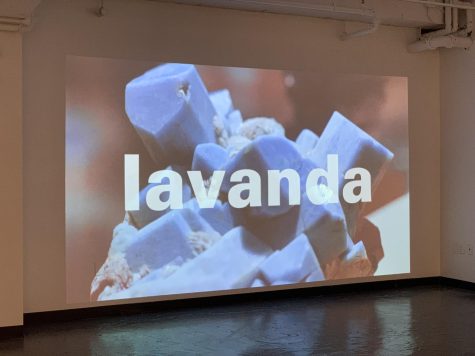Emerson Contemporary’s Media Art Gallery has been hosting Los Angeles-based artist and filmmaker Kerry Tribe’s Onomatopoeia exhibition from Jan. 26 to April 3.
Tribe grew up in Cambridge and received her MFA from UCLA and received a BA in Art and Semiotics from Brown University. Her work primarily involves film, video, and installations.
The exhibition features works created between 2010 and 2021. According to the website, the works “reflect the artist’s longstanding interest in consciousness, memory, and the limits of linguistic communication.”
Emerson Contemporary’s curator-in-residence Leonie Bradbury said that Tribe’s work intersects contemporary art and different areas of study at Emerson like communication, journalism, and visual media arts.
“Three years ago when I came to Emerson—there’s so many people working with film and video—[and with] the different areas of study at Emerson, I thought it might be a good time to reach out to her,” Bradbury said.
They started working together on the exhibit three years ago, but were forced to put it on hold due to the pandemic. About a year ago, they resumed working on the exhibit.
Onomatopoeia showcases two documentary videos: “The Last Soviet” (2010) and “Afasia” (2017). Narrated and subtitled in English and Russian, “The Last Soviet” is a 10-minute video that offers different perspectives on the emotions of a lost Russian cosmonaut on the Mir space station during the collapse of the Soviet Union.
“Afasia” highlights a photographer who had a left-hemisphere stroke, impacting his ability to communicate. Subtitled in English and Spanish, the photographer’s reflection, combined with a description of Tribe’s efforts to re-learn a foreign language brings an understanding of how the limitation of language impacts life.
The exhibition shows two photographic prints from 2017, Black Tourmaline (front) and Black Tourmaline (back), that will be shown in the U.S. for the first time. Silkscreens inspired by cognitive tests, as well as two new “scratch drawings,” are also featured.
Forest for the Trees (2015) features a monitor located among potted plants and apple boxes that shows one word at a time. Fantastic Voyage (2020) is a recording which visitors are invited to listen to on their personal devices.
“Her work is really strong in the sense that as you spend more time with it, there’s more that you can discover in the world, and you start seeing connections across all the different works that are presented together in the gallery, so it’s rewarding in that sense,” Bradbury said. “The more time you spend [on it], the more you get out of it.”
